Table of Contents
Parakram Diwas, observed annually on January 23, celebrates the valour and legacy of Netaji Subhas Chandra Bose, one of India’s most revered freedom fighters. This year, 2025, marks the 128th birth anniversary of Netaji, with the day falling on a Thursday. The occasion reminds us of his extraordinary contributions to India’s independence movement and inspires patriotism among citizens.
Netaji Subhash Chandra Bose
The patriotism of Indian Nationalist Netaji Subhash Chandra Bose has left a lasting impression on many Indians On January 23, 1897, he was born in Cuttack, Orissa. He is well-known for founding the organization “Azad Hind Fauj,” and his slogan is “Tum Mujhe Khoon Do, Main Tumhe Azadi Dunga.” The burn injuries he sustained in a plane crash caused Netaji Subhash Chandra Bose to pass away on August 18, 1945, at a hospital in Taiwan.
The most well-known liberation Indian freedom fighter, Netaji Subhas Chandra Bose possessed exceptional leadership qualities and was a charismatic orator. His slogans include “Delhi Chalo,” “tum mujhe khoon do,” and “main tumhe azadi dunga.” He established Azad Hind Fauj and made numerous contributions to the fight for India’s independence. He is renowned for his socialist policies as well as for the forceful tactics he utilized to win independence.
Netaji Subhas Chandra Bose Birth Anniversary
The birth anniversary of Netaji Subhas Chandra Bose, celebrated annually on January 23, is a tribute to one of India’s most influential freedom fighters. This day, also observed as Parakram Diwas (Day of Valour), marks the extraordinary contributions of a leader who epitomized courage, patriotism, and unwavering commitment to India’s independence.
Subhash Chandra Bose Early Life and Family
The son of Prabhavati Dutt Bose and Janakinath Bose, Subhash Chandra Bose was born in Cuttack, Orissa, on January 23, 1897. His father had the title of “Rai Bahadur” and was a well-known lawyer in Cuttack. Like his siblings, he attended the Protestant European School in Cuttack, which is now Stewart High School. He completed his undergraduate studies at Presidency College.
After reading their writings at the age of 16, Swami Vivekananda and Ramakrishna’s teachings had an impact on him. Then, to prepare for the Indian Civil Service, his parents sent him to the University of Cambridge in England. In 1920 he passed the civil service examination, but in April 1921, after hearing of the nationalist turmoil in India, he resigned his candidacy and hurried back to India.
Subhash Chandra Bose Ideology
Bhagavad Gita had an impact on him, and he saw it as a source of inspiration for the fight against the British. From a young age, Netaji Subhash Chandra Bose was highly affected by the Universalist and nationalistic ideas of Swami Vivekanand.
He was drawn to the ideas of socialism and communism when he was a member of the Congress party. However, he thought it would succeed in India if National Socialism and Communism were to be combined. He favoured gender equality, secularism, and other liberal ideologies, but he didn’t think democracy was ideal for India.
Check out: India’s Freedom Struggle
Netaji Subhash Chandra Bose Biography Video
Check Out: Freedom Fighters of India
Netaji Subhas Chandra Bose History
The following are the Important event which describes Netaji Subhas Chandra Bose’s Contribution to the Indian Freedom fighter.
Subhash Chandra Bose And Indian National Congress
He joined the Non Cooperation Movement, which Mahatma Gandhi founded and turned into a potent non-violent movement. Mahatma Gandhi recommended he collaborate with Chittaranjan Das, who later served as his political mentor, during the agitation. Following that, he worked as a youth educator and volunteer commander for the Bengal Congress.
He founded the “Swaraj” newspaper. After being released from prison in 1927, Netaji Subhash Chandra Bose joined the Congress party as general secretary and fought for independence with Jawaharlal Nehru.
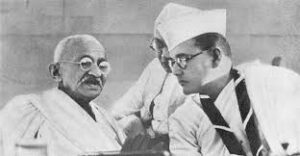
At the time of the Civil Disobedience Movement Bose was in detention for linking with a Bengal revolutionary group. He became the Mayor of Calcutta while in prison. Thereafter he was released and detained several times on suspected links to revolutionary groups. Finally, he was released on grounds of poor health and allowed by the government to go to Europe. He returned from Europe in 1936 and remained in detention for about a year.
After being elected president of the Indian National Congress in 1938, he established a national planning committee and developed a wide industrialization agenda. However, Gandhian economic theory, which stuck to the idea of cottage industries and profiting from the utilization of the nation’s resources, did not agree with this. When Subhash Chandra Bose won his reelection bid in 1939 over a Gandhian opponent, it served as vindication for him. Nevertheless, the “rebel president” felt compelled to step down because Gandhi didn’t back him.
Subhash Chandra Bose Escape from India
Subhash Chandra Bose evaded house arrest in 1941 and left India wearing a disguise. Adolf Hitler even met with him, and he began to receive backing from Nazi Germany. He established the Free India Center in Berlin and recruited Indian POWs who had previously fought for the British in North Africa before being captured by Axis troops to form the Indian Legion, which now numbers about 4500 soldiers.
The Indian soldiers of the Indian Legion and representatives of the Special Bureau for India in Berlin placed the title of Netaji on Bose in Germany in 1942. Nazi Germany was slipping backwards in the west in the years 1942–1943 when World War II was in full flow. Japanese forces were rapidly approaching in the east. The Bengal Famine and the Quit India campaign were both raging in India. Subhash Chandra Bose left for Japan in 1943 after experiencing failure in Germany.
Azad Hind Fauj or Indian National Army (INA)
The establishment and efforts of the Azad Hind Fauj commonly referred to as the Indian National Army, or INA, during the Second World War were a significant development in the liberation struggle. With the help of Indians living in Southeast Asian nations, Rash Behari Bose, an Indian revolutionary who had fled his country and spent many years living in Japan, founded the Indian Independence League.

- General Mohan Singh’s Contribution:
- General Mohan Singh, a former British Indian army officer, significantly aided in organizing the INA.
- Subhash Chandra Bose’s Leadership:
- Bose, in exile in Germany, arrived in Singapore in 1943 to lead the INA.
- Azad Hind Fauj comprised 45,000 soldiers, including Indian prisoners of war and settlers in Southeast Asia.
- Provisional Administration Announcement:
- On October 21, 1943, Bose declared the provisional administration of independent India in Singapore.
- Offensive in Northeastern India:
- INA launched an offensive in early 1944, attempting to drive the British out of northeastern India.
- Despite their fervent efforts, the attempt to liberate India was unsuccessful.
- Collaboration with Japan:
- While the Indian nationalist movement viewed Japan cautiously, Netaji saw a potential ally in overthrowing British control.
- Azad Hind Fauj and an uprising within India were seen as crucial for India’s freedom.
- Contribution of Indian Women:
- Azad Hind Fauj organized a women’s unit, Rani Jhansi, led by Captain Lakshmi Swaminathan.
- Women played a significant role in the fight for India’s independence.
- End of World War II:
- Fascist Germany and Italy were defeated in 1945, concluding World War II.
- The U.S. used atomic bombs on Hiroshima and Nagasaki, leading to Japan’s surrender.
- Despite ending the war, atomic weapons caused new global tensions and a race for more destructive arms.
Netaji Subhash Chandra Bose’s Death
Netaji Subhash Chandra Bose died on August 18, 1945, in a plane crash the INA forces were being captured or surrendered and he was en route to Tokyo through Taiwan. On August 18, 1945, Subhash Chandra Bose reportedly perished in an aeroplane collision over Taipeh, Taiwan (Formosa). There isn’t a lot of information available, despite the widespread belief that he survived the plane disaster.
Subhash Chandra Bose: Important Events for UPSC
Here you can check all the important events in the life of Subhash Chandra Bose in the table below:
| Subhash Chandra Bose: Important Events for UPSC |
|
| Year | Description |
| 1919 | Compete for Indian Civil Services |
| 1923 | Subhash Chandra Bose was elected as the President of the All India Youth Congress. |
| 1924 | He served as the CEO of the Calcutta Municipal Corporation when Das was the mayor of Calcutta. |
| 1930 | During the Civil Disobedience Movement, Subhash Chandra Bose was imprisoned. Later on, he was elected Mayor of Calcutta. |
| 1938 | During his tenure as Congress President, he was chosen President of the Haripura Congress Session (Gujarat). |
| 1941 | Netaji Subhash Chandra Bose disguising himself, left India after escaping house arrest. |
| 1945 | Subhash Bose was flying from Taiwan to Tokyo when his jet crashed, during the capture or capitulation of the INA soldiers. |
Explore the page to uncover the untold stories for Other Famous Personalities Biography and gain insights into the profound impact they have had on the world. Check here this link: Biographies of Famous Personalities.
Ready to turn your UPSC dreams into reality? Join the trusted StudyIQ UPSC Foundation P2I Live Hinglish Batches today! Our expert-led courses are designed to build a solid foundation while keeping you updated with the latest exam trends. Contact us now to enroll and get one step closer to cracking the UPSC exam with confidence
| List of Other Famous Personalities Biography | |
| Jhasi Ki Rani Laksmibai | Maharana Pratap |
| Rabindranath Tagore | Jyotiba Phule |
| Satyendra Nath Bose | Raja Ram Mohan Roy |
| Mangal Pandey | Sarojini Naidu |
| Bhagat Singh | Sardar Vallabhbhai Patel |

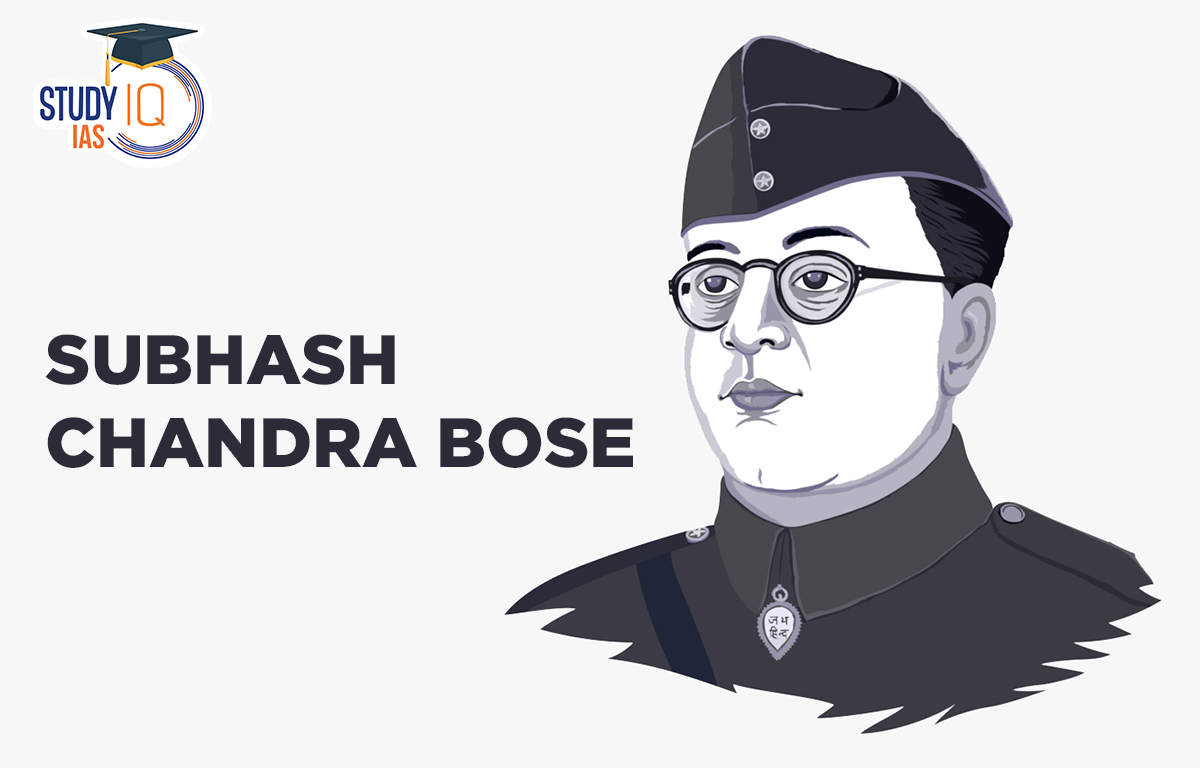
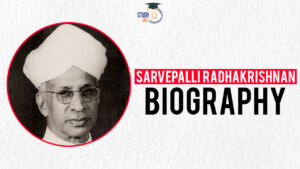 Dr. Sarvepalli Radhakrishnan Biography, ...
Dr. Sarvepalli Radhakrishnan Biography, ...
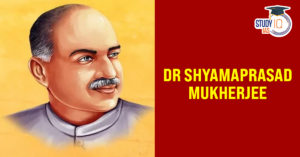 Dr. Shyama Prasad Mukherjee Biography, L...
Dr. Shyama Prasad Mukherjee Biography, L...
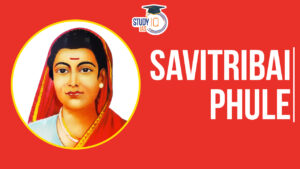 Savitribai Phule Biography, Early Life, ...
Savitribai Phule Biography, Early Life, ...





















